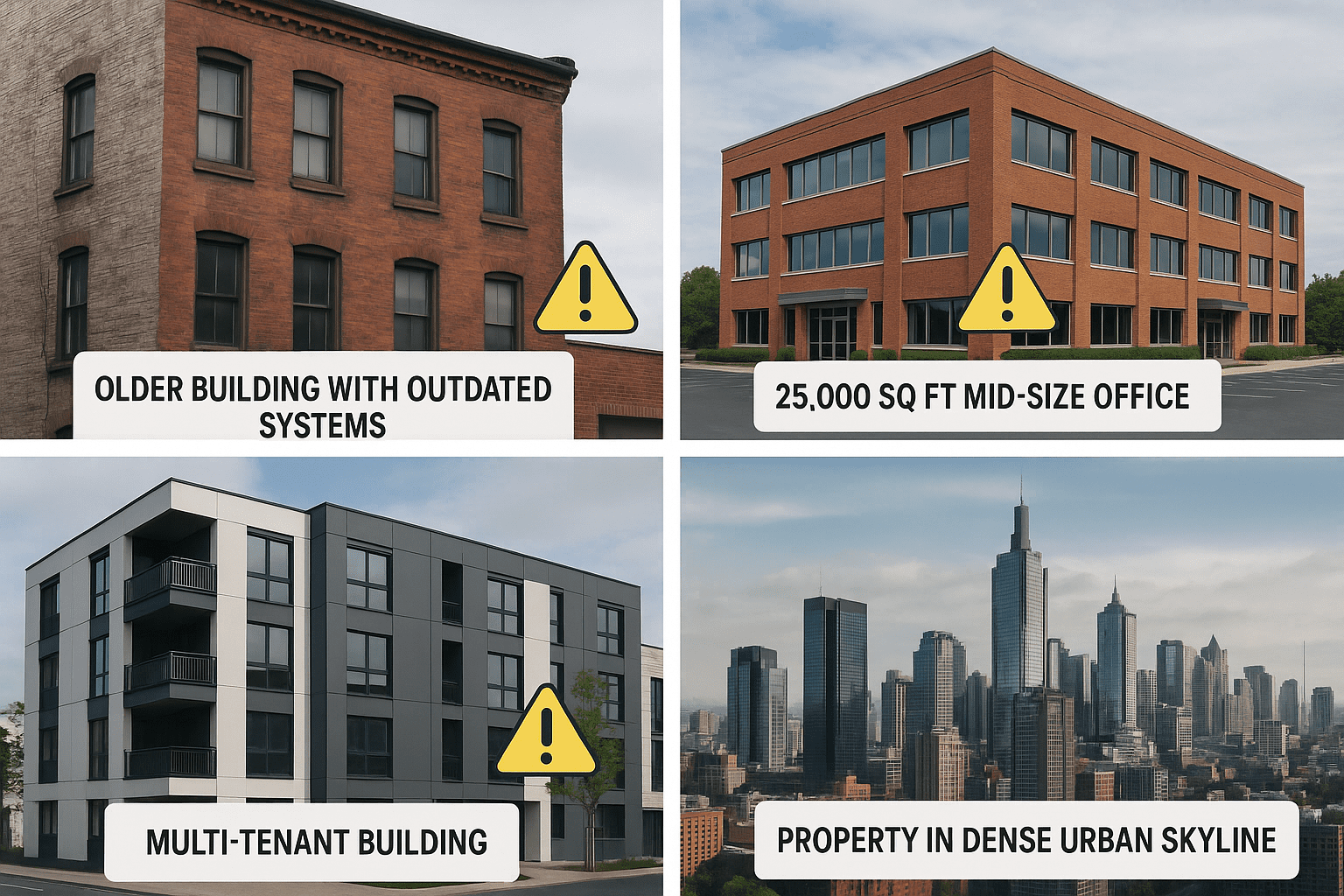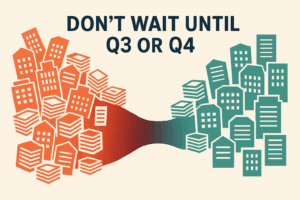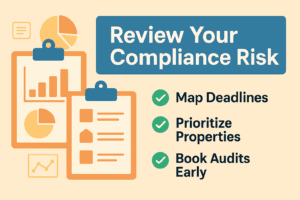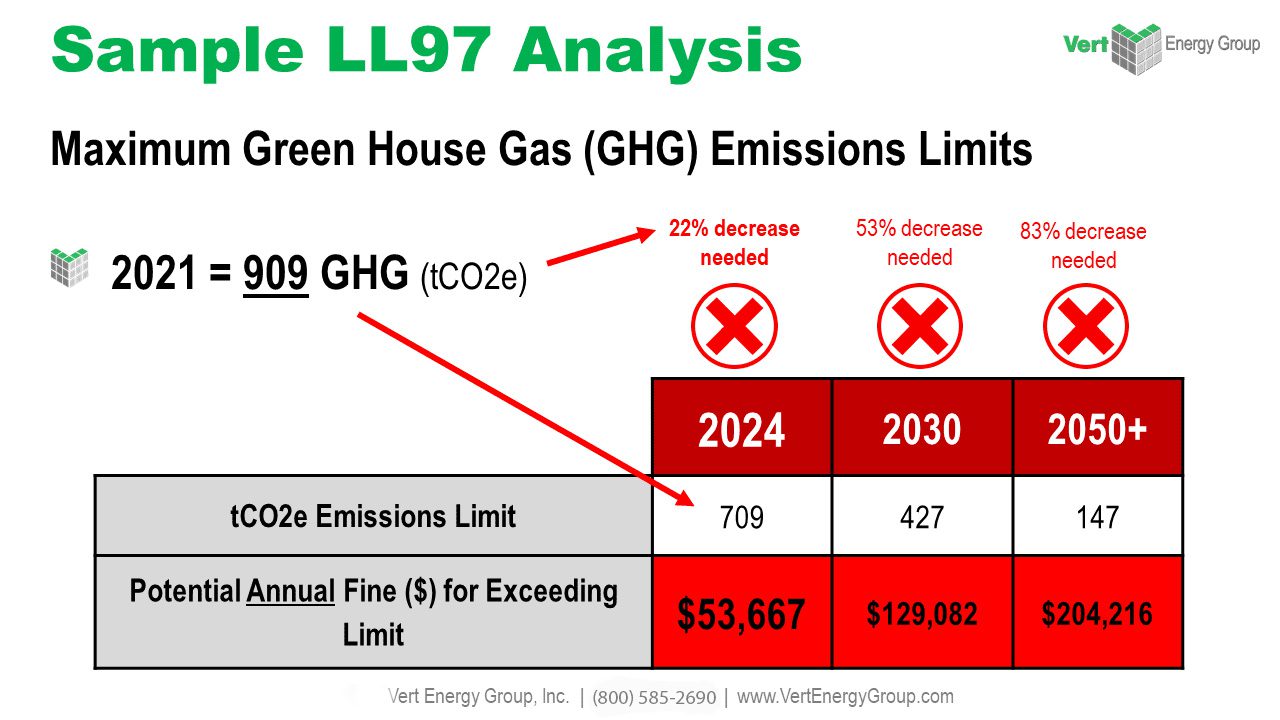If your portfolio is spread across multiple jurisdictions, 2025 may bring more risk than ever. New and changing clean energy laws are impacting commercial property portfolios across the country. From energy benchmarking rules to Building Performance Standards (BPS) and greenhouse gas (GHG) limits, laws now vary widely by city and state.
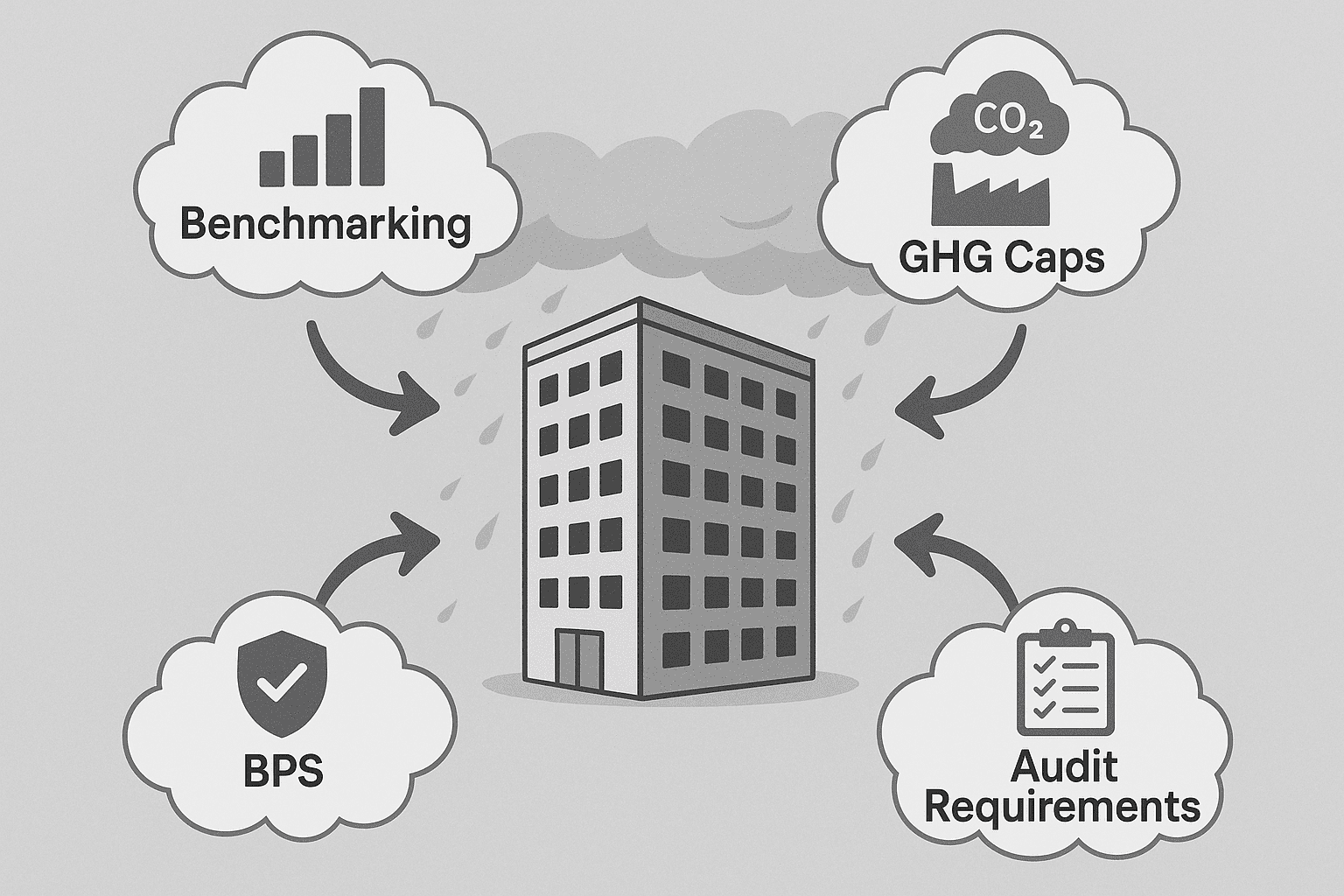
This article will show you how to assess the portfolio compliance risk across your properties, highlight the most exposed asset types, and share what you can do now to stay ahead.
Run a risk scan on your building portfolio today.
Why Portfolio Risk Is Rising
In 2025, there are more clean energy ordinances than ever.
The rules differ by jurisdiction, and the penalties for missing them are growing. What makes things difficult for national property owners is that these rules don’t apply evenly. Some buildings are covered by one law. Others may be hit by three.
Here are just a few examples:
- A property in Denver may be subject to Benchmarking, Performance Targets, and Electrification requirements.
- A building in New York must report emissions under Local Law 97 and meet strict GHG caps.
- In Washington, D.C., buildings must comply with BEPS timelines and show year-over-year improvement.
If you own buildings in multiple cities, the risk multiplies. That’s where portfolio compliance risk becomes a serious concern.
What Is Portfolio Compliance Risk?
Portfolio compliance risk refers to how likely your collection of buildings is to fall out of compliance with local energy laws. It includes:
⚠️ Common Compliance Challenges
📉 Data Gaps
Missing energy use data or building details.
⏰ Missed Deadlines
Forgetting to file annual reports on time.
🏢 Overlapping Regulations
More than one law applying to the same building.
🔄 Untracked Updates
Cities quietly changing rules, deadlines, or requirements.
If you’re wondering how to assess energy law risk across your building portfolio, it starts with knowing what laws apply, where, and when.
Why Multi-Building Owners Are More Exposed
If you own a single building in one city, it’s easier to stay on top of local energy laws. But if you manage ten, twenty, or fifty buildings across different states, exposure climbs quickly. Here’s why:
More jurisdictions = more complexity.
Each law has different thresholds. One law may apply to buildings over 25,000 sq ft, while another starts at 10,000.
Every city sets its own deadlines.
Different data is required. Some cities want just energy use; others ask for emissions, system types, or audits.
That makes it easy to miss something. If you do miss something, you risk non-compliance fines, public notices, or even restrictions on building operations.
Properties That Are Most At Risk

Some property types are more exposed than others when it comes to commercial energy risk assessment. Based on 2025 law changes, the most at-risk categories include:
- Older buildings with outdated HVAC or lighting systems.
- Buildings just above new thresholds (e.g., 20,000–30,000 sq ft) that were previously exempt.
- Mixed-use or multi-tenant buildings where energy use is harder to track.
- Properties in major metros like NYC, SF, DC, LA, and Denver.
If your property portfolio includes these types, your exposure may be higher than you think.
What Laws You Need To Watch
The biggest challenge is the overlapping nature of today’s energy laws. A single building might have to follow:
- Benchmarking laws (annual reporting of energy data)
- Building Performance Standards (BPS) that require steady improvements
- GHG emissions caps that limit carbon output from buildings
- Auditing requirements tied to energy use and system upgrades
Each of these comes with its own compliance dates and data rules. That’s why tools for managing energy audit and benchmark risk across states are becoming more important.
How To Reduce Risk Across Your Portfolio
Reducing compliance risk starts with visibility. You need to see all your properties in one place, alongside key deadlines, law types, and performance data. That’s where a centralized compliance platform becomes a game-changer.
From there, take these steps:
- Conduct a baseline audit for all buildings.
- Map each property to local laws and track compliance requirements.
- Assign responsibility within your team for updates and submissions.
- Upgrade at-risk buildings with efficiency improvements.
- Monitor city updates so you’re aware of changing laws.
Even one missed filing can mean thousands in fines. But the upside of early action is strong: lower operating costs, improved building value, and better ESG scores.
Get ahead of upcoming energy compliance across your assets.
Final Thoughts
The biggest mistake multi-building owners make is waiting too long to assess their compliance exposure. Energy laws are moving fast, and many cities update rules without much notice.
When you run a portfolio-wide risk scan, you get clarity. You see which buildings are vulnerable, what actions are needed, and how to prepare for what’s coming. That’s the difference between reacting to fines and leading with strategy.
The right tools help you get ahead of the curve, not caught behind it.
One dashboard – every city’s risk. Book your portfolio review.
